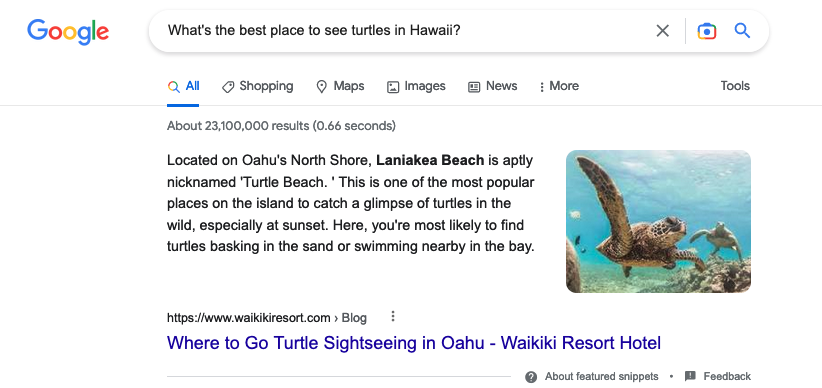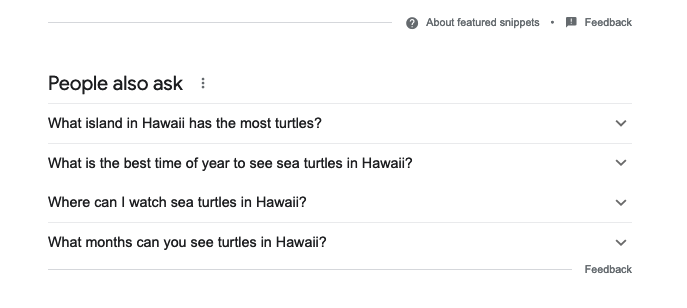Digital Transformation
How to Adapt Content to Rank in Voice Search Results
Do you often pick up your phone and ask it a question? If you answered “yes,” you’re not alone. Forty-one percent of US adults use voice search daily. It wouldn’t surprise anyone if the average American talked to Siri or Alexa more than their family and friends.
When voice recognition technology first became popular, consumers used it to have funny conversations with AI or ask their Bluetooth speakers to play their favorite songs. People still do that, even as they increasingly turn to voice search technology for answers to their questions. Voice search enables instant gratification, providing an answer in seconds for about 94 percent of all search queries.
What does voice search mean for content marketers in 2023? We have four takeaways. But first, let’s connect the dots between voice search and digital marketing.
Voice Search & Digital Marketing: What’s the Connection?
The mainstreaming of voice search means that digital marketers need to adapt their digital content to make it voice-search friendly so they can rank in voice search results.
Don’t panic—that doesn’t mean you need to abandon your current practices and re-write everything on your site. Basic search engine optimization (SEO) principles still apply to voice searches. SEO is all about writing for the customer and creating content that answers burning questions. That core concept remains the same, though voice search does affect SEO in one way—length.
When consumers use voice search (compared to regular text search), they typically ask longer, more precise, and more conversational questions. Voice search queries average 29 words, and those questions are often situational and specific. As a consequence, you need to optimize your content to ensure rank in voice search results.
4 Ways to Make Your Content Marketing Voice Search Friendly
Use these strategies to rank higher in voice search results.
1. Partner with your organization’s digital marketing team.
For anything SEO-related, the content and digital marketing functions must be in lockstep. Voice search is no exception.
Aligning your marketing team around the same goals is one way to promote collaboration. If you include voice search rank results as a quarterly goal for your team, then each sub-function will come up with relevant actions toward that goal. There may be some overlap between content and digital marketing. Working together will yield maximum results.
While digital marketing and content marketing’s responsibilities vary widely across organizations, it’s essential for both functions to understand SEO best practices. In that way, multiple people on the marketing team can collaborate throughout the content development process to drive the best results.
Be sure to partner with digital marketing experts to create paid and other forms of digital content optimized for web search.
2. Optimize for featured snippets.
Featured snippets, or highlighted pieces of text that appear at the top of a Google results page, are your golden ticket toward getting more organic traffic to your site. Often referred to as “Position 0,” featured snippets deliver such a perfect answer to a query that the user doesn’t scroll any further down the page.
When it comes to voice search, featured snippets are even more important. Most of the time, Siri pulls the answer to a question directly from Google’s featured snippet.
Note, however, that Google’s algorithm is constantly changing, which means that the most effective strategies will also change. As of now, however, consider these strategies for getting your content in the coveted featured snippet spot:
- Explicitly answer the question users search for.
- Use SEO tools like Semrush to identify target keywords with a featured snippet and create content specifically to rank for that snippet, answering burning questions and satisfying search engines alike.
- Write valuable, readable, and targeted SEO-optimized content to out-rank your competitors.
- Organize your content so that human readers and search engines can easily scan it. Use headings that include your target keyword, listicles, etc.
- Follow SEO best practices, like including the target keyword in your meta description, using internal and external links and optimal URL structure, etc.
Tip: To stay on top of trends, read SEO-specific publications like Search Engine Journal as a part of your routine.
3. Write content that answers questions.
This might seem obvious, but the more you tailor your content to answer a user pain point or question, the more likely it is to end up in the top rank of the voice search results page.
Writing question-based content forces you to step back and ask yourself, “Does the content I’m writing serve a customer’s need or is it purely serving a marketing objective?” It’s a great litmus test during content brainstorming.
Answering questions, rather than only providing information, is also a key way to show up in voice search. When people use it, they often ask questions such as, “What’s the weather like today?” or “Can my dog eat celery?”
Let’s dive deeper and examine the “People also ask” section in Google SERP results. When you type a question into Google, a box often pops up with four similar questions. This appears either directly after the featured snippet or after one or two organic results.
By following best SEO practices for a particular keyword and writing targeted, question-focused content, you can build your credibility and eventually show up in the “People also ask” section. For this section, it’s important to check out related searches and see what questions show up. Ask yourself, “How can I tailor content to answer the audience’s original question and any follow-ups they might have?”
4. Create mobile-friendly content.
Most voice searches come from mobile devices. In fact, 27 percent of the global online population uses voice search on their mobile phone. If you want to rank for voice search, you need to make sure your website and content are as mobile-friendly as possible.
This is another instance where collaboration with the digital marketing function is essential. Together, content and digital marketers need to optimize the website for mobile and create content that’s easy for users to engage with on their devices.
A few tips to help you optimize your content for mobile include:
- Create short, catchy, and concise content pieces
- Use statistics and design elements to set your content apart from competitors
- Create visuals that adhere to responsive web design
- Make your CTAs obvious
- Chunk content into short paragraphs
- Use snappy headings for readability
Looking Ahead: The Future of Voice Search
If the past few years are any indication, voice search isn’t going anywhere. In 2023, expect more consumers to gravitate toward the convenience and value of using devices on the go to get answers in seconds.
Don’t want to miss an update? Subscribe to our weekly newsletter to get content marketing trends, tips, and tricks delivered straight to your inbox!
Image by miakievyGet better at your job right now.
Read our monthly newsletter to master content marketing. It’s made for marketers, creators, and everyone in between.






